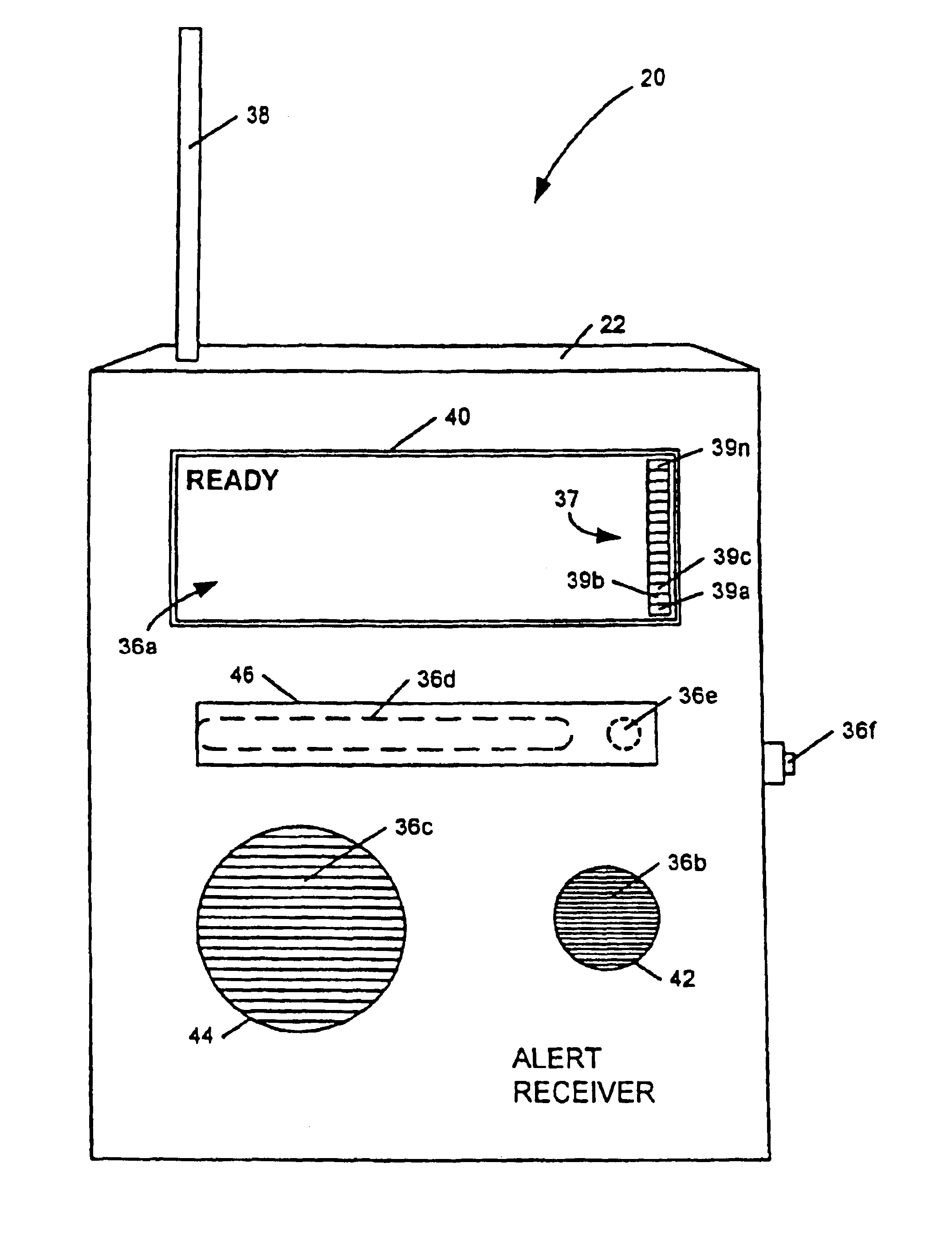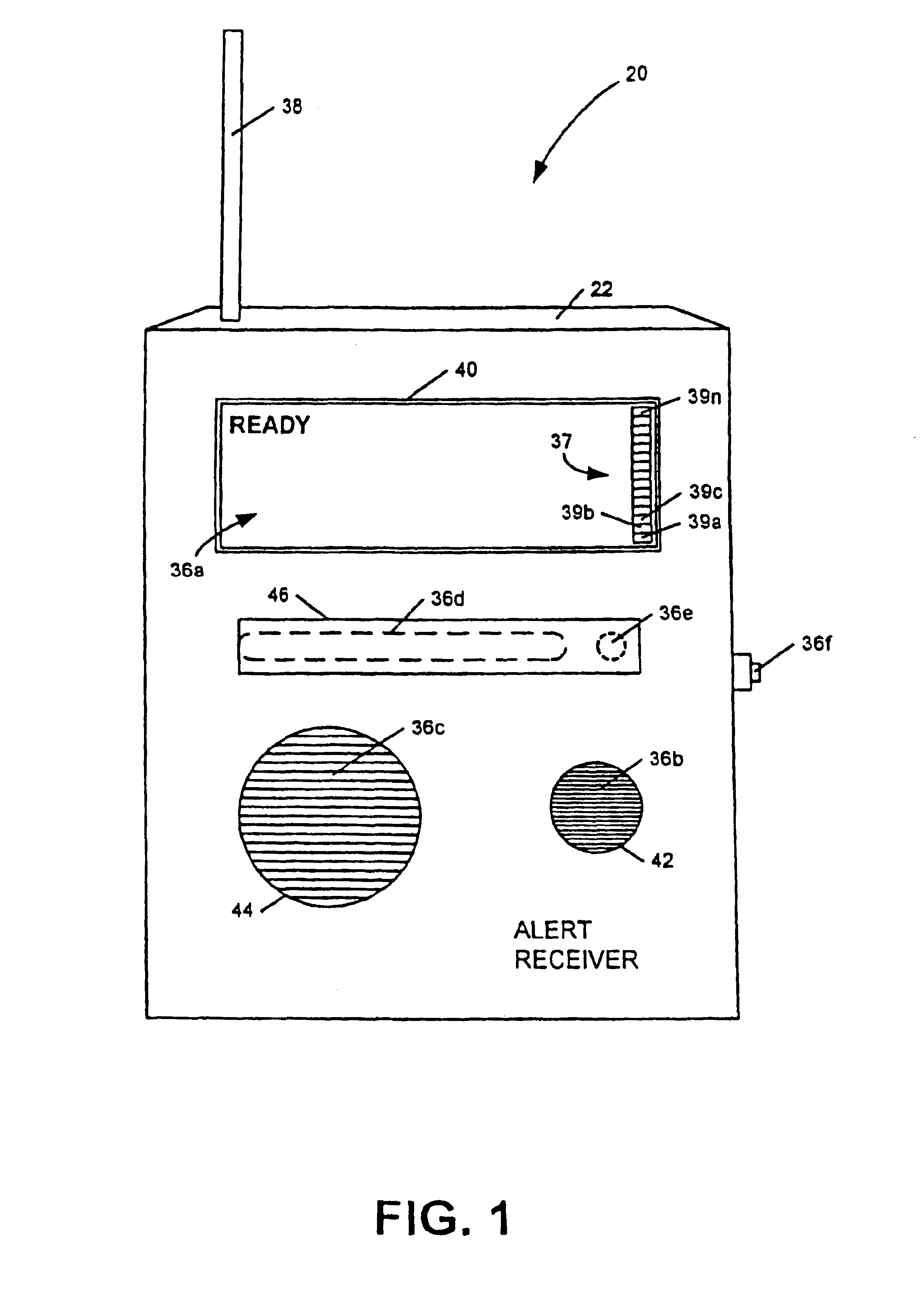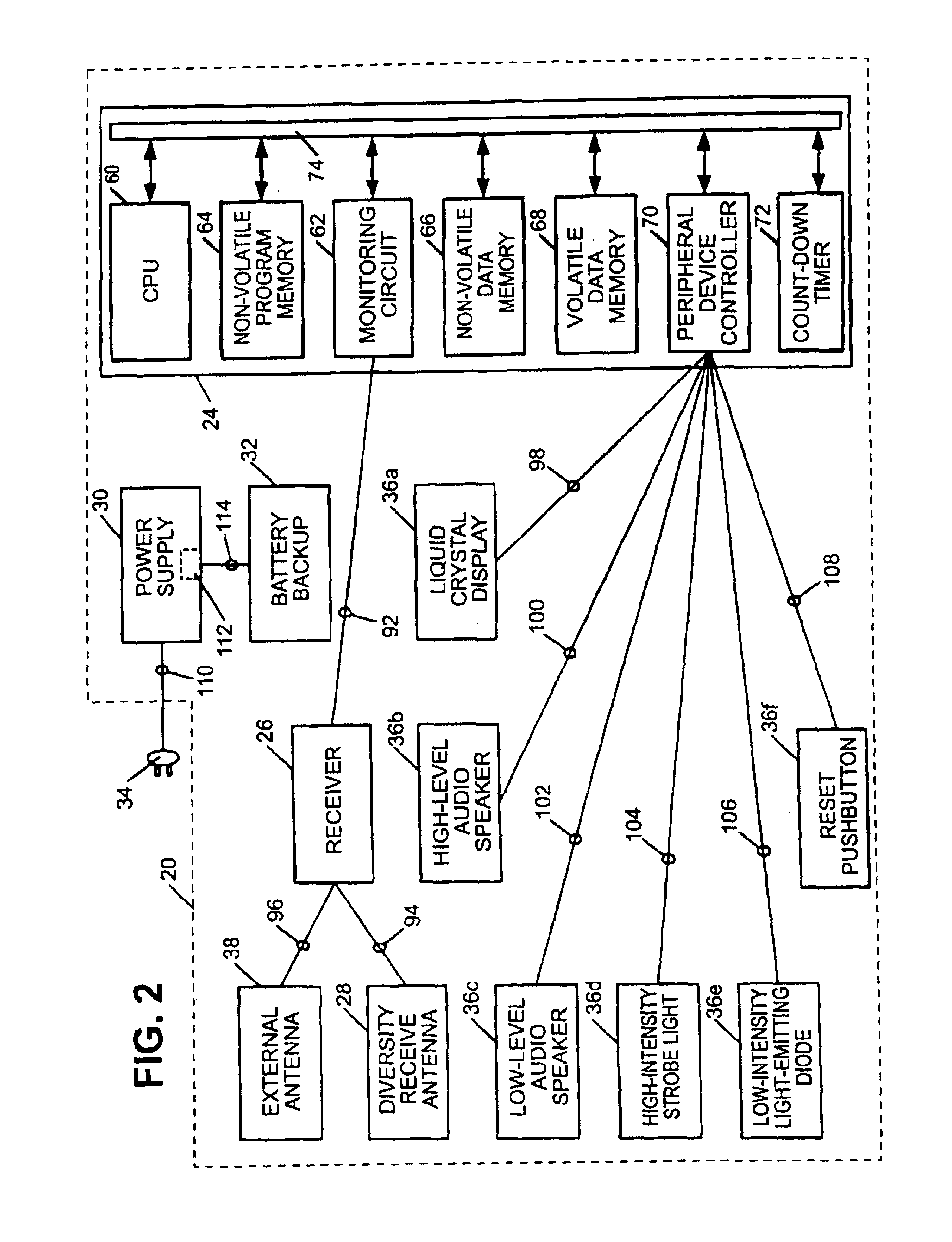Briefly described, the present invention comprises an alert apparatus and method for receiving a location-specific alert (i.e., an alert directed and relevant to a particular geographical area) and for informing a user, who may be visually or
hearing impaired, of the existence and severity of the alert. More particularly, the present invention includes an alert apparatus and method which allow a user to receive data corresponding to an alert which has been broadcast via particular transmitters operating within a cellular, PCS, or
wireless telephone communications network, thereby allowing
receipt of a location-specific alert (and a textual message associated with the alert) without requiring the user to input, to the alert apparatus, data representative of or identifying the location of the apparatus. Further, the present invention includes an alert apparatus and method which produces high-
decibel level audible sounds and high-intensity flashing
strobe light corresponding to alerts of the most severe level and which produces low-
decibel level audible sounds and low-intensity flashing light from a light-emitting
diode corresponding to alerts of a less severe level.
In accordance with a method of the preferred embodiment of the present invention, the alert device operates according to the instructions of a
computer software program residing in the
microcomputer and performs a self-test when powered-up to determine whether the alert device is functioning properly. The alert device, through cooperation between the
microcomputer, monitoring circuit, and
receiver, then scans a factory-set, pre-identified set of radio channels comprising a range of channels used by compatible cellular or PCS telecommunication networks in order to identify the channel associated with the cellular or PCS
transmitter which transmits on a
digital control channel and which has the strongest
signal strength at the location of the alert device. The alert device then locks onto and passively monitors the selected channel for digital alerts in the form of broadcast messages. Because the alert device passively monitors PCS network broadcasts, use of the alert device should not result in the user incurring periodic service charges from the network provider.
In accordance with an alternate preferred embodiment of the present invention, the alert device is operable with an alert messaging
system of a
service provider which provides different levels of service (i.e., service levels or
modes) to a user of the alert device in exchange for a subscription fee paid to the
service provider by the user. The plurality of service levels or
modes enable different classifications of alert messages to be related to and associated with the subscription status of a user (i.e., the service level selected by, subscribed to, and paid for by a user). Based upon the service level selected by the user and stored in a service
level data element of the user's alert device, the user's alert device will provide that
level of service to the user. For example and not limitation, a user may select a service level from any of the following levels: fully enabled; partially enabled; or, fully disabled. The
user pays a subscription fee to the
service provider in an amount determined by the selected service level, and the service provider causes a service
level data element stored at the user's alert device to be set to a value indicating the service level or mode selected by the user. Once set, the user's alert device operates at the selected service level. In the fully enabled mode, the alert device reacts to all alert messages and provides the user with any received information pertaining to the corresponding alert. In the partially enabled mode, the alert device only reacts to the most severe alerts (i.e., “Level One” alerts) to provide subscribers with a minimal
level of service and warnings. In the fully disabled mode, the alert device does not react to any alerts. Such
operability allows a service provider of alert messages to establish and enforce compliance with a subscription system.
Accordingly, it is an object of the present invention to provide an apparatus and method for receiving location-specific alert information without requiring a user to input data representative of the user's location.
Still another object of the present invention is to provide an apparatus for receiving location-specific alert information that can be moved from an old location to a new location without requiring
reprogramming or the input of data representative of the new location.
Still another object of the present invention is to provide an apparatus and method for receiving location-specific alert information that produces different sensory outputs corresponding to the different levels of severity or importance of alerts.
 Login to View More
Login to View More  Login to View More
Login to View More 


